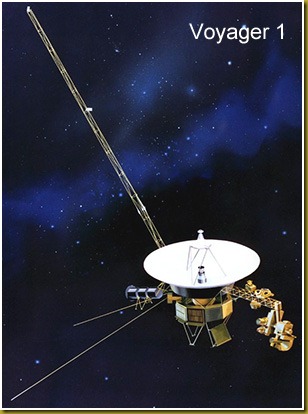Kind of Exciting: Voyager About to Leave the Solar System
Back in 1977, before the Internet and before Microsoft Windows or Microsoft DOS even (for those that know what that even is), NASA (the National Aeronautics and Space Administration of the USA) launched a probe into space called Voyager. It is known as Voyager I because they also launched another Voyager (Voyager II).
Unlike most other probes that man has sent out into space Voyager I did not have a particular planet or moon in our solar system as its destination. Voyager’s end-point mission was to simply continue zooming out into space away from the Sun until it managed to leave the realms of our defined solar system.

Voyager is so far away that radio signals from it back to mother Earth take over 15 hours to make the trip. So we don’t get any data that is sent back by Voyager until 15 hours after the probe has transmitted it.
So … what is the excitement?
The excitement is that the experts monitoring Voyager I think it is very close to leaving the solar system; possibly within months!
If they have decoded the data coming back from Voyager I correctly then a craft made by man and fired into space by man is about to leave the heliosphere of our solar system and enter into interstellar space.
If you want to read a little more about the travels of ‘Voyager I’ and its twin sister ‘Voyager II’ then you might like to check out the article “Get Ready, Because Voyager I is *This Close* to Leaving Our Solar System” here at the Atlantic site or here at the official NASA Voyager Interstellar Mission site (which is also where the hyperlink attached to the above image will take you).

